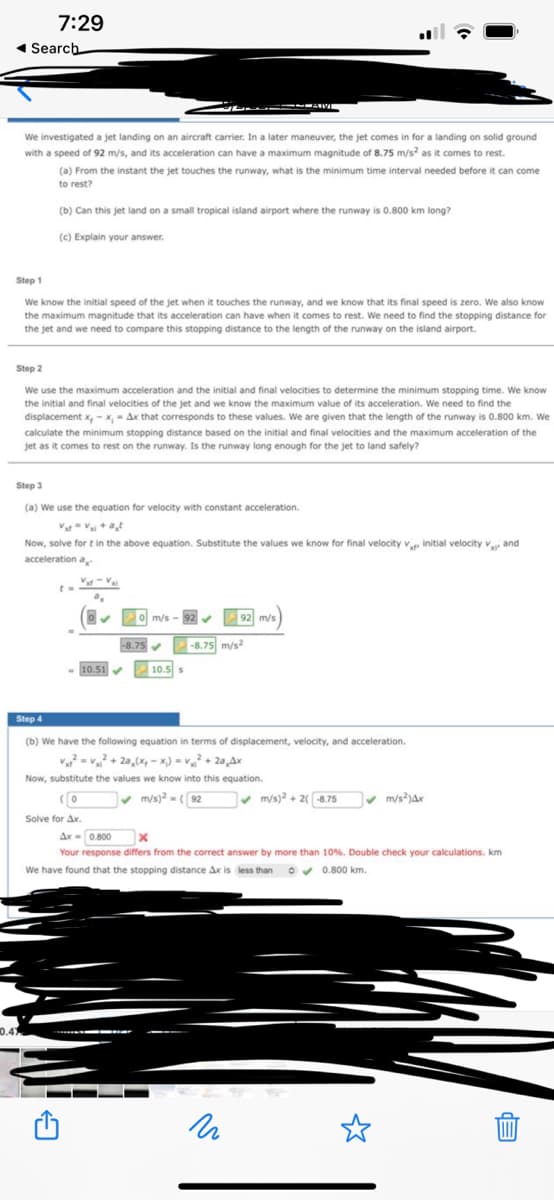We investigated a jet landing on an aircraft carrier. In a later maneuver, the jet comes in for a landing on solid ground with a speed of 92 m/s, and its acceleration can have a maximum magnitude of 8.75 m/s2 as it comes to rest. (a) From the instant the jet touches the runway, what is the minimum time interval needed before it can come to rest? (b) Can this jet land on a small tropical island airport where the runway is 0.800 km long? (c) Explain your answer. Step 1 We know the initial speed of the jet when it touches the runway, and we know that its final speed is zero. We also know the maximum magnitude that its acceleration can have when it comes to rest. We need to find the stopping distance for the jet and we need to compare this stopping distance to the length of the runway on the island airport. Step 2 We use the maximum acceleration and the initial and final velocities to determine the minimum stopping time. We know the initial and final velocities of the jet and we know the maximum value of its acceleration. We need to find the displacement x,-x-Ax that corresponds to these values. We are given that the length of the runway is 0.800 km. We calculate the minimum stopping distance based on the initial and final velocities and the maximum acceleration of the jet as it comes to rest on the runway. Is the runway long enough for the jet to land safely? Step 3 (a) We use the equation for velocity with constant acceleration. Now, solve fort in the above equation. Substitute the values we know for final velocity v initial velocity and acceleration a 10.51 Solve for Ax. 0 m/s-92✔ 92 m/s -8.75 m/s2 Ax-0.800 -8.75✔ Step 4 (b) We have the following equation in terms of displacement, velocity, and acceleration. v²=²+2a₂(x-x) =v²+2a Ax Now, substitute the values we know into this equation. ✔m/s)2-(92 10.5 ✔m/s)² +28.75 m/s²)Ax x Your response differs from the correct answer by more than 10%. Double check your calculations. km We have found that the stopping distance Ax is less than 0 0.800 km.
Displacement, Velocity and Acceleration
In classical mechanics, kinematics deals with the motion of a particle. It deals only with the position, velocity, acceleration, and displacement of a particle. It has no concern about the source of motion.
Linear Displacement
The term "displacement" refers to when something shifts away from its original "location," and "linear" refers to a straight line. As a result, “Linear Displacement” can be described as the movement of an object in a straight line along a single axis, for example, from side to side or up and down. Non-contact sensors such as LVDTs and other linear location sensors can calculate linear displacement. Non-contact sensors such as LVDTs and other linear location sensors can calculate linear displacement. Linear displacement is usually measured in millimeters or inches and may be positive or negative.

Trending now
This is a popular solution!
Step by step
Solved in 2 steps with 2 images


